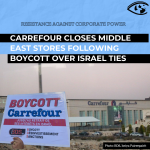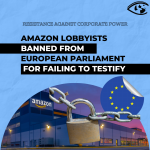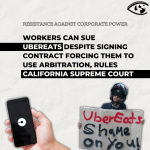US: A World Consumed by Guilt
Let us set aside the clichés about green fashion, ye cynical
Kermits, and presume that everyone is now on board with saving the
world by doing our holiday shopping at Barneys, where even the window
displays promote eco-friendly clothing.
Let us also presume that organic cotton jeans are good for the earth,
and soy-based underwear will someday save the polar bears. Let us
carry all our purchases of environmentally sensitive clothing made
from bamboo, corn, coconuts, hemp and/or pineapples in our reusable
designer grocery bags.
If only buying into green fashion was so easy.
No matter how sincere fashion designers may be in their efforts to
embrace the green movement this season, consumers may find themselves
perplexed by how to gauge the environmental impact of the many
products that claim to be eco-friendly.
After factoring in the fabrics used in clothes and how they were
produced, the real benefits of soy versus organic cotton versus
recycled polyester may be slight, or confusing, or quite possibly
misleading.
"When you only look at the raw materials to ask if something is
really green, you are like the blind person holding the tail of the
elephant," said Chris Van Dyke, chief executive of Nau, a
three-year-old outdoor clothing line founded on the principle of
sustainable practices throughout its production cycle, including the
ecological costs of shipping and caring for garments. "There's a
whole lot of other factors you need to assess."
Some clothes, like Loomstate's $295 organic cotton jeans - sold
unwashed and not color-fast, to save energy - require unusual care.
A pair of 2(x)ist soy underwear, $24 at Macy's, include a warning
that imperfections are to be expected. "These characteristics should
not be considered flaws in the fabric," the packaging says, "but
rather as an intrinsic quality contributing to the uniqueness of the
garment."
Some designs marketed as environment-friendly might include only a
fraction of organic cotton, or a tag made of recycled paper. And some
so-called green fashion may be downright silly, like the Goyard canvas
shopping tote shown in the Barneys "Have a Green Holiday" catalog:
the bag is $1,065, plus $310 for painted monogramming of a triangular
recycle symbol in gold. The canvas, the catalog says, is "100%
recyclable."
Sorry, does canvas go with paper, plastic or glass?
Almost every industry has felt the explosion of green marketing. Green
is the new new and improved.
But the trend has advanced so quickly that it becomes difficult to
evaluate the claims of products that say they are biodegradable,
carbon neutral or made from sustainable materials. In recognition of
rapidly expanding consumer interest, the Federal Trade Commission said
on Monday that it will quickly re-evaluate its guides for green
designations in marketing, last updated in 1998, to determine whether
they need to be expanded.
More than half of the 2,007 respondents in a shopper survey in
September by BBMG, a branding agency, said they were looking for
certification seals on green claims to feel confident about their
purchases.
"It is no longer O.K. to slap a green label on something and think
that is acceptable to consumers," said Raphael Bemporad, a partner
in the agency. "If you just put an eco-friendly phrase on something,
you are risking a backlash from more savvy consumers."
For consumers trying to balance their interests between consumption
and the environment, the pros and cons of green fashion are
complex.
Fabrics made from bamboo or hemp, for example, are promoted as having
been raised without pesticides and also for growing much faster than
cotton. But the downside is that bamboo or hemp fibers are naturally
tough and are typically softened before being woven into fabric by
using chemical treatments, which cause more pollution.
Naturally softer fabrics made from soy have a mild impact compared to
cotton, according to environmental groups, but they are less durable,
so clothes wear out faster and have to be replaced more often -
which has an environmental cost of its own.
Organic cotton, which has become trendy in recent years among
eco-conscious consumers because it is grown without pesticides, still
represents only a tiny fraction of the global cotton crop, about .02
percent, according to statistics provided by several agencies. But
organic cotton is not always used in its pure state. The Department of
Agriculture's standards do not regulate textile production once
cotton has been harvested, so as a fabric it may be chemically
treated, or printed with toxic dyes, and still be labeled as
organic.
Designers seem motivated to create products that live up to their
personal convictions about socially responsible clothing.
"Most brands endeavor to tell an honest story," said Savania
Davies-Keiller, a designer for the fashion label DDCLAB, which sells
clothes made from corn fiber. "But the brand is reliant on the mill
and on the manufacturer of the raw goods. You, as the end consumer,
are reliant on the honesty of your brand."
And there are still other factors for the concerned consumer to
consider.
Clothes that are assembled in factories far from the mills that
produced the fabrics and the stores that sell the finished products
leave carbon footprints in their journey around the world. Mr. Van
Dyke's company uses recycled polyester in its performance outerwear.
The fabric is made from used soda bottles and polyester uniforms
gathered in the United States and shipped to Japan for processing. The
clothes are then made in China and distributed in the United
States.
"All of this is a trade-off," Mr. Van Dyke said. "We're still
moving products around the world, but on balance we view that as a
more environmentally responsible solution than using more oil-based
fabrics."
There is a grass-roots movement for clothes avoid the fabric
complications in that they are made only from old clothes. Collections
like Urban Renewal at Urban Outfitters and Project Alabama recycle
scraps of used clothing to make new designs.
Alternatives also exist for consumers who remain skeptical about
jewelry marketed as "conflict free" or "fair trade," terms
meant to indicate that workers in underdeveloped countries were not
exploited. Such designs include gold recycled from scrap. Melissa Joy
Manning designs earrings and necklaces with flying fox claws and wild
dog teeth that are naturally shed, and Monique Péan's collection
includes bracelets made with fossilized ivory from ancient walruses
and woolly mammoths. But are they really green'? Perhaps not in the
way you expect.
Ms. Péan purchases the ivory from subsistence hunters slightly north
of the Bering Strait in Shishmaref, Alaska, where rising temperatures
have caused the sea ice to erode and threatened the village. She said
that 10 percent of her profits will be donated to the Alaskan Native
Arts Foundation and that she has contributed about $20,000, but her
main objective was to raise awareness of the human impact of climate
change.
"You hear so much about green and the environment," she said.
"But you don't often hear about the people and some of the issues
they are facing right now."
You don't often hear the whole story at all.
In its green holiday catalog, Barneys promotes a $7,600 dress by the
rising London designer Duro Olowu as being made from a patchwork of
"recycled fabric." Not to split hairs, but Mr. Olowu said in an
interview that the fabrics had not come from previously used clothing.
They were made of a mix of his own prints and some original, unused
samples of leftover couture textiles he found.
"It's not recycling," he said. "It's reclaiming and
sustaining what already exists."
Some argue that the greenest clothes - the ones least likely to
adversely affect the earth and its climate - are the ones you
already own. No new resources will be depleted to make them, and if
they need infrequent washing and can be drip-dried, all the better. A
review of my own closet - after clearing away the detritus of 100
plastic dry-cleaning bags - suggests I may be one of the least green
people on the planet, perhaps personally responsible for the dust
cloud looming over China as a result of over-grazing of Mongolian
goats. About the only thing that could be considered green is a
17-year-old high school sweatshirt that still fits. But I routinely
machine wash it in hot water and dry it on high heat so it remains as
soft and cuddly as possible.
So what can an unreformed consumer do in the face of green fashion
that doesn't always fit?
exist and we're probably never going to get there," said Leslie
Hoffman, the executive director of Earth Pledge, a nonprofit group
that promotes sustainable development and technologies. "We all make
compromises every day. Making them with your eyes open instead of
arbitrarily is the best piece of advice I could give."
- 189 Retail & Mega-Stores



